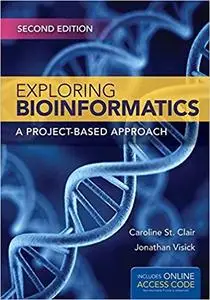Exploring Bioinformatics: A Project-Based Approach (2nd Edition) by Caroline St. Clair, Jonathan E. Visick
English | 2013 | ISBN: 1284034240 | 300 Pages | PDF | 13.5 MB
English | 2013 | ISBN: 1284034240 | 300 Pages | PDF | 13.5 MB
Thoroughly revised and updated, Exploring Bioinformatics: A Project-Based Approach, Second Edition is intended for an introductory course in bioinformatics at the undergraduate level. Through hands-on projects, students are introduced to current biological problems and then explore and develop bioinformatic solutions to these issues. Each chapter presents a key problem, provides basic biological concepts, introduces computational techniques to address the problem, and guides students through the use of existing web-based tools and software solutions. This progression prepares students to tackle the On-Your-Own Project, where they develop their own software solutions. Topics such as antibiotic resistance, genetic disease, and genome sequencing provide context and relevance to capture student interest. With a focus on developing students' problem-solving skills, the Second Edition of Exploring Bioinformatics: A Project-Based Approach is a contemporary and comprehensive introduction to this rapidly growing field.
New to the thoroughly updated Second Edition:
•Offers a flexible approach to understanding key bioinformatics algorithms with exercises that can be used with or without programming.
•For programming courses, pseudocode allows students to implement algorithms in any desired programming language.
•Includes more substantive web-based projects for a more comprehensive, hands-on introduction to bioinformatics in non-programming courses.
•Contains updated material reflecting changes in how bioinformatics is used: next-generation sequencing, metagenomic analysis, statistical methods, etc.
•Contains more instructive and relevant case studies as well as more cohesive connections between the case studies and the exercises.



